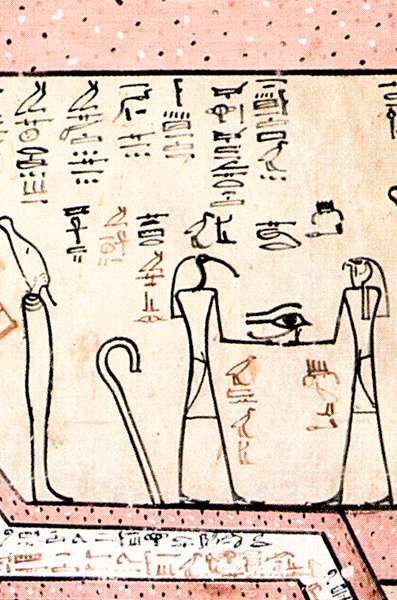The “Book of the Hidden Chamber”, generally known as Amduat, is the earliest attested Egyptian cosmography of the Hereafter. Painted on the walls of the burial chamber of New Kingdom royal tombs in Thebes during the first phase of its attestation (15-14th century BC), it displays the journey of the Sun God Re through the Netherworld during the twelve hours of the night, culminating in his rebirth every morning in the east. The Amduat is a thoroughly illustrated book whose pictures and texts constitute a fixed, inseparable unity. The interplay of images and texts in this book was not only a means to store and pass down existing cosmographic knowledge but also played a significant role in the process of knowledge generation.
Research
Drawing upon linguistic approaches and semiotic theories of iconicity and multimodality, Aleksandra Lapčić is investigating the complementarity and interaction of writing and pictorial representation in the Amduat as well as the specific functions of the individual modalities. She has delineated a typology of the text-image relations in this book by scrutinizing how information is encoded in the text and in the pictures. Due to the pictorial iconicity of hieroglyphic signs, the boundaries between writing and images sometimes tend to dissolve. This phenomenon of signs belonging to both modes at the same time, which is not restricted to the Amduat but occurs in other Egyptian text-image compositions as well, has been termed “ambimodality” by Aleksandra Lapčić. A preliminary report on multimodal meaning making in the Amduat, including a typology of ambimodal signs, is to be found in Lapčić, Bild-Schrift-Gestalten des Göttlichen. Multimodale Informationsverarbeitung im Amduat Thutmosis’ III.
Results
Within the doctoral program Ancient Languages and Texts at the Berlin Graduate School of Ancient Studies and the Topoi research group (C-1) Deixis and Frames of Reference, Aleksandra Lapčić has co-organized several interdisciplinary workshops and conferences, such as a workshop on “Ikonizität. Perspektiven der Semiotik und Linguistik” in June 2013 and the international conference “Peirce, Hieroglyphs and Multimodality” in May 2014. An intense and highly productive dialog between scholars of Semiotics and Ancient Studies was established at these workshops and will be continued with an upcoming Topoi conference “Pictures and Texts – Pictures as Texts”. Such networking had a significant influence on the development of this Ph.D. project and resulted in, among other things, a cooperative research project with Winfried Nöth (Pontificia Universidade Católica de São Paulo) on Charles S. Peirce’s studies in the language and culture of Pharaonic Egypt. The output of this research has been publicated in the Transactions of the Charles S. Peirce Society (Kammerzell, Lapčić & Nöth 2016).
This Ph.D. thesis is written within the program “Ancient Languages and Texts” (ALT) of the Berlin Graduate School of Ancient Studies (BerGSAS).

